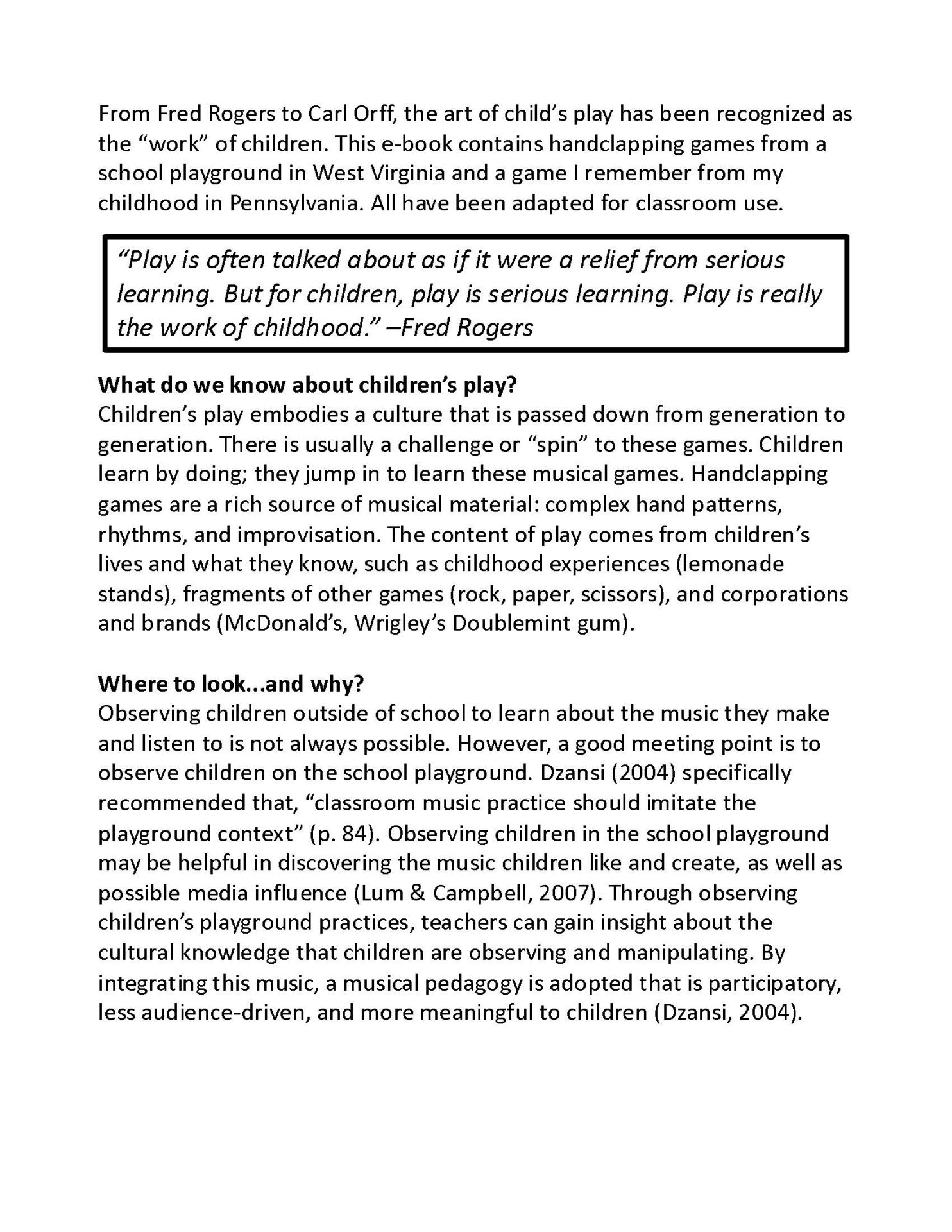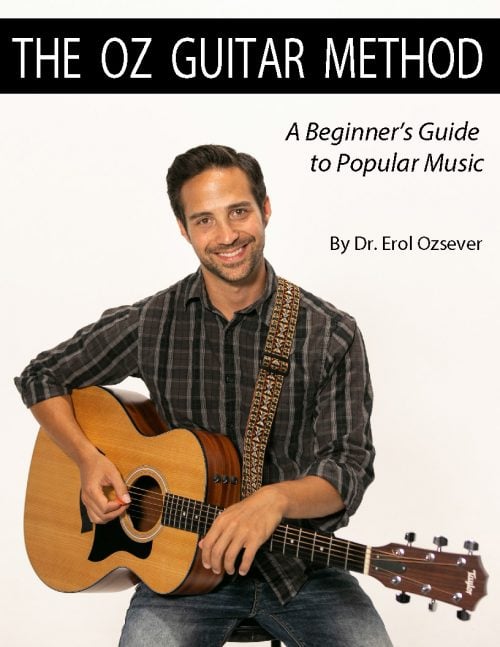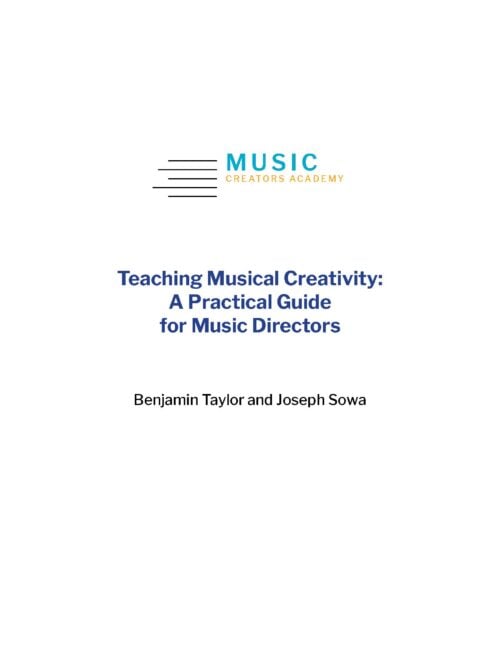Description
During my doctoral studies at West Virginia University (2011–2014), I completed a study where I examined children’s musical behaviors on a playground (grades K–5). I discovered that handclapping games were the most prevalent form of music making that children shared, specifically in grades 2–3. The Art of Child’s Play includes some of the games I learned from those children as well as a handclapping game I remember from my own childhood. I hope you enjoy the way these materials have been developed for the music classroom through the Orff approach.
There are many considerations when integrating children’s play into general music classrooms. First, use culture bearers—the children! Allow them to demonstrate what they know. Second, access recordings and videos of the original game or song. There are many videos that children upload to YouTube showing hand clapping games and songs. Children love seeing other children demonstrate knowledge. Third, shift to oral traditions for teaching. There is no need to hand out sheet music. Playground games and music are learned by ear. Last, when adapting materials for the classroom, preserve the spirit of the music. It is not likely that a piano would accompany a playground song. Why not keep it a capella?
As you work through The Art of Child’s Play, consider the following questions as you try out the materials with your students:
- How sensitive am I to children’s musical knowledge?
- Have I ever made an effort to discover what children are already doing musically?
- What do I know about how children play today?
- What do I know about the content of children’s play today?
- How can we take children’s play and adapt it for the classroom to reach musical, social, and emotional goals?














Reviews
There are no reviews yet.